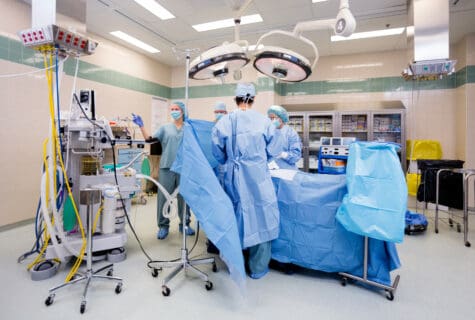
Many practices are so busy trying to incorporate new CPT codes into their systems at the beginning of a new year that they may not notice other codes that have rolled out. Such has been the case for some providers this year, who focused so strongly on the changes to the E/M code set that they haven’t yet gotten a chance to dig into the newly released HCPCS codes that apply specifically to ambulatory surgery center (ASC) billing.
Check out a few important details to report these ambulatory surgery center codes properly.
New Codes Are Medicare and ASC Specific
In January of this year, CMS rolled out dozens of new codes that were specifically designed to be reported by ASCs for certain services provided to Medicare beneficiaries. You’ll send claims including these codes to the Medicare Administrative Contractor (MAC) so the ASC can collect for specific services or combinations of services.
It’s important to note that these codes aren’t meant to be interchangeable between hospitals and ASCs. They are restricted to use in the ASC setting, so be sure to check the place of service and ensure that you aren’t submitting these codes for locations outside of the ASC.
Say Hello to 17 New Cardiology Codes
Among the new ASC codes, you’ll find 17 that are relevant to cardiology procedures. Most of these are for relatively complex services, and the new codes describe a combination of services, thus making it simpler to submit claims for a multi-part procedure using just one code. For instance, among the new codes, you’ll find:
- C7516 (Catheter placement in coronary artery(s) for coronary angiography, including intraprocedural injection(s) for coronary angiography, with endoluminal imaging of initial coronary vessel or graft using intravascular ultrasound (ivus) or optical coherence tomography (oct) during diagnostic evaluation and/or therapeutic intervention including imaging supervision, interpretation and report)
- C7552 (Catheter placement in coronary artery (s) for coronary angiography, including intraprocedural injection(s) for coronary angiography, imaging supervision and interpretation; with catheter placement(s) in bypass graft(s) (internal mammary, free arterial, venous grafts) including intraprocedural injection(s) for bypass graft angiography and right heart catheterization with intravascular doppler velocity and/or pressure derived coronary flow reserve measurement (coronary vessel or graft) during coronary angiography including pharmacologically induced stress, initial vessel)
You’ll collect about $2,327 for C7516, which describes catheter placement that includes the use of imaging. You don’t need to use multiple imaging types to report this service. Rather, the descriptor indicates that imaging might include the use of OCT or IVUS, but it’s not necessary to utilize both types.
If you report C7531, you’ll collect approximately $2,327, the same payment amount as C7516. The key difference here, however, is that C7552 describes a much more specific procedure, using terms like “right heart catheterization” and “in bypass graft.” This demonstrates the need to scrutinize the operative report very carefully, since you won’t be able to select the most accurate code without understanding exactly what service the physician performed.
Check New Interventional Radiology Codes
Also on the list of new ASC codes, you’ll find several that describe interventional radiology procedures that apply to different parts of the body. For instance, the following two are among the new codes in this category:
- C7501 (Percutaneous breast biopsies using stereotactic guidance, with placement of breast localization device(s) (eg, clip, metallic pellet) when performed, and imaging of the biopsy specimen, when performed, all lesions unilateral and bilateral (for single lesion biopsy, use appropriate code)
- C7507 (Percutaneous vertebral augmentations, first thoracic and any additional thoracic or lumbar vertebral bodies, including cavity creations (fracture reductions and bone biopsies included when performed) using mechanical device (eg, kyphoplasty), unilateral or bilateral cannulations, inclusive of all imaging guidance)
You’ll collect about $1,072 for C7501, which includes not only the clip placement, but also the imaging of the actual biopsy specimen for all lesions biopsied during that encounter.
For C7507, you’ll collect approximately $6,434. Note that this procedure includes the creation of the cavity using kyphoplasty, as well as the vertebral augmentation itself for all of the thoracic and lumbar vertebral bodies the provider addresses.
It can be challenging to break down new codes, but expert help is here! Check out the online training Master New 2023 E/M Coding Changes. During this 60-minute session, coding expert Kim Huey, MJ, CHC, CPC, CCS-P, PCS, CPCO, will walk you through the updated 2023 codes so you can ensure you’re reporting them correctly.
| Subscribe to Healthcare Practice Advisor | |
| Get actionable advice to help improve your practice’s reimbursement, compliance, and success in this weekly eNewsletter. |
|
|
|
